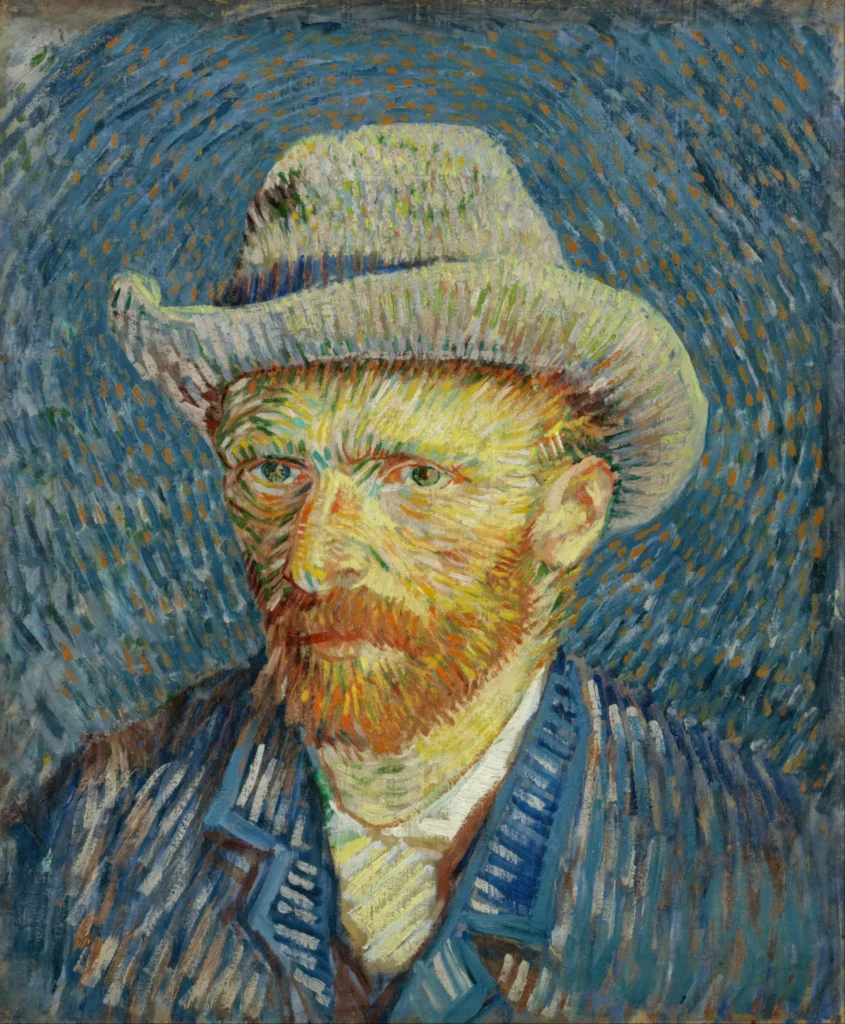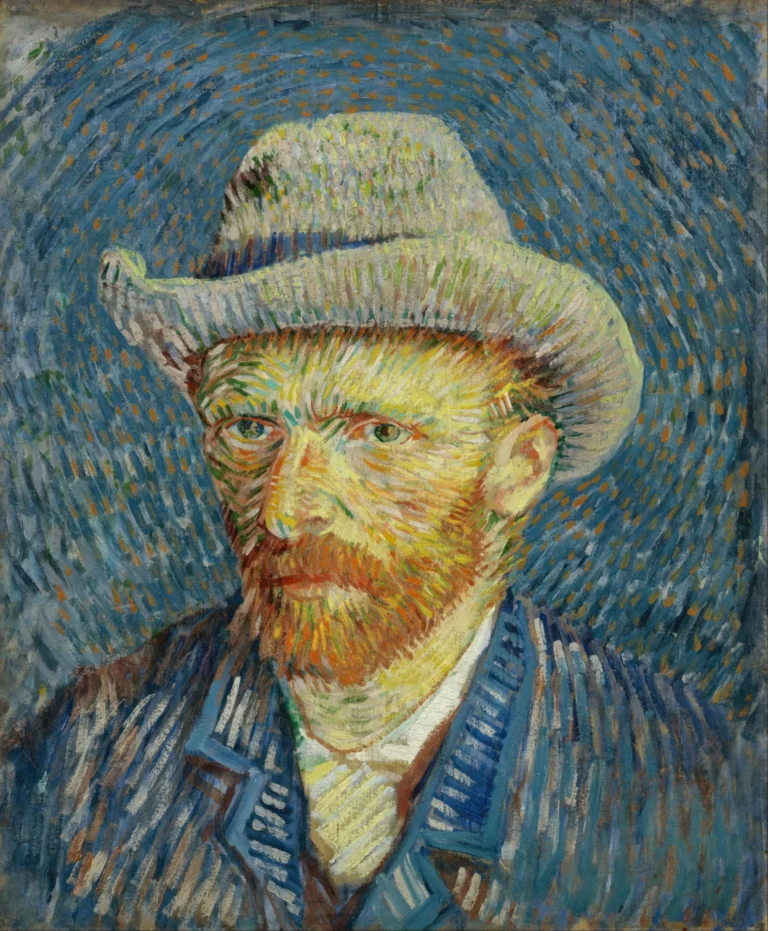Self-Portrait With Grey Felt Hat (1887)
Painted in the autumn of 1887, Self-Portrait with Grey Felt Hat portrays Vincent van Gogh donning a stylish suit and hat, juxtaposed against a swirling backdrop colored in vibrant hues. Van Gogh's daring use of complementary colors and expressive brushwork reveals not only his technical prowess but also his state of mind during a turbulent yet transformative phase in his life. The painting exemplifies his departure from traditional portraiture towards a more emotional, dynamic expressionism that characterizes much of his oeuvre.
1887 - 1888
About the Artwork
Van Gogh painted Self-Portrait with Grey Felt Hat during his time in Paris, where he immersed himself in the city's bustling art scene. This period was crucial for the artist as he delved into the works of contemporaries and experimented with color and technique. The self-portrait, showcasing his distinct style with bold colors and expressive lines, illustrates the artist's struggle for identity and belonging. The backdrop reflects his inner turmoil, contrasting the sophisticated exterior he presented to the world. After his death, the painting became part of his brother Theo’s collection and was eventually passed down to Theo's widow, Jo van Gogh-Bonger, solidifying its historical significance and preserving Van Gogh's legacy.
Did You Know
This self-portrait reflects Van Gogh’s exploration of his own identity during a critical period of personal and artistic growth, often expressing the emotions he faced through vivid visual language.
During Van Gogh’s Paris years, he was inspired by Impressionism and Post-Impressionism, integrating his styles with the innovative techniques of artists like Georges Seurat, though he never strictly adhered to any one movement.
The self-portrait was originally left in his brother Theo’s apartment and later passed to Theo’s widow. This familial connection highlights the importance of personal relationships in preserving Van Gogh’s artistic legacy.










